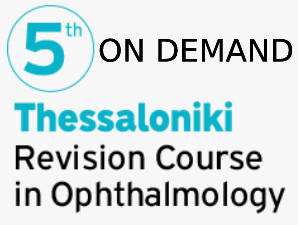Presented by: Paris Tranos MD, PhD, ICOphth, FRCS
Edited by: Penelope Burle de Politis MD

Chronic endophthalmitis after phacoemulsification is a rare complication, most commonly caused by Cutibacterium acnes but also by coagulase-negative staphylococci or fungi. It typically appears weeks to months after surgery due to slow-growing organisms sequestered within the capsular bag or intraocular lens biofilm.
Patients usually present with persistent or recurrent mild intraocular inflammation, decreased vision, and sometimes small hypopyon or white plaques on the posterior capsule. The differential diagnosis includes retained lens fragments, autoimmune uveitis, lens-induced inflammation, and intraocular lymphoma. Aqueous or vitreous sampling aids in distinguishing infectious from non-infectious causes.
Treatment involves intravitreal antibiotics (vancomycin for gram-positive and ceftazidime for gram-negative coverage), often combined with corticosteroids. However, pars plana vitrectomy with posterior capsulectomy and frequently intraocular lens removal is often required to completely eradicate infection and restore vision. Early recognition and appropriate surgical intervention are critical to achieving good visual outcomes.
In this video, recorded in the main operating room of the Ophthalmica Eye Institute in Thessaloniki, Greece, Dr. Paris Tranos (MD, FRCS), specialist in vitreoretinal surgery, performs the surgical treatment of lens remnant-induced chronic endophthalmitis on the right eye of a 65-year-old man who had undergone cataract surgery with in-the-bag IOL implantation 6 months earlier.
The surgical steps and timing in the video are as follows: removal of anterior vitreous opacities (00:00); complete pars plana vitrectomy and triamcinolone injection in the vitreous chamber for visualization of possible cortical remnants (00:10); IOL dislocation from the bag into the anterior chamber (00:28); IOL segmentation and explantation (01:05); aspiration of retroiridal and intracapsular purulent material along with removal of the entire capsule (01:22); final inspection and peripheral vitreous sparing through scleral indentation (03:04); hydration and sealing of the corneal incisions (03:16); end of the procedure (03:18).
“The root cause of a problem is never solved at the level at which it was created.” – Albert Einstein
Video:



